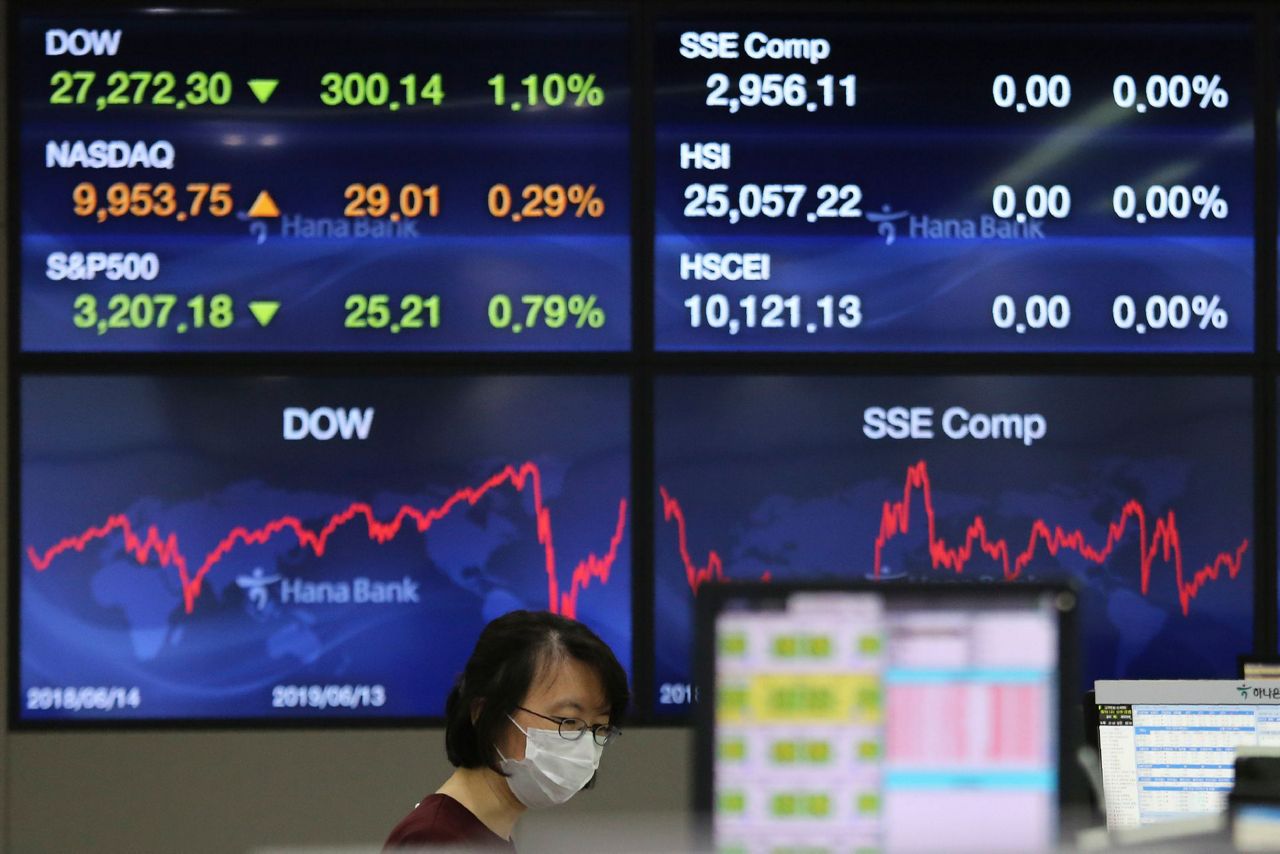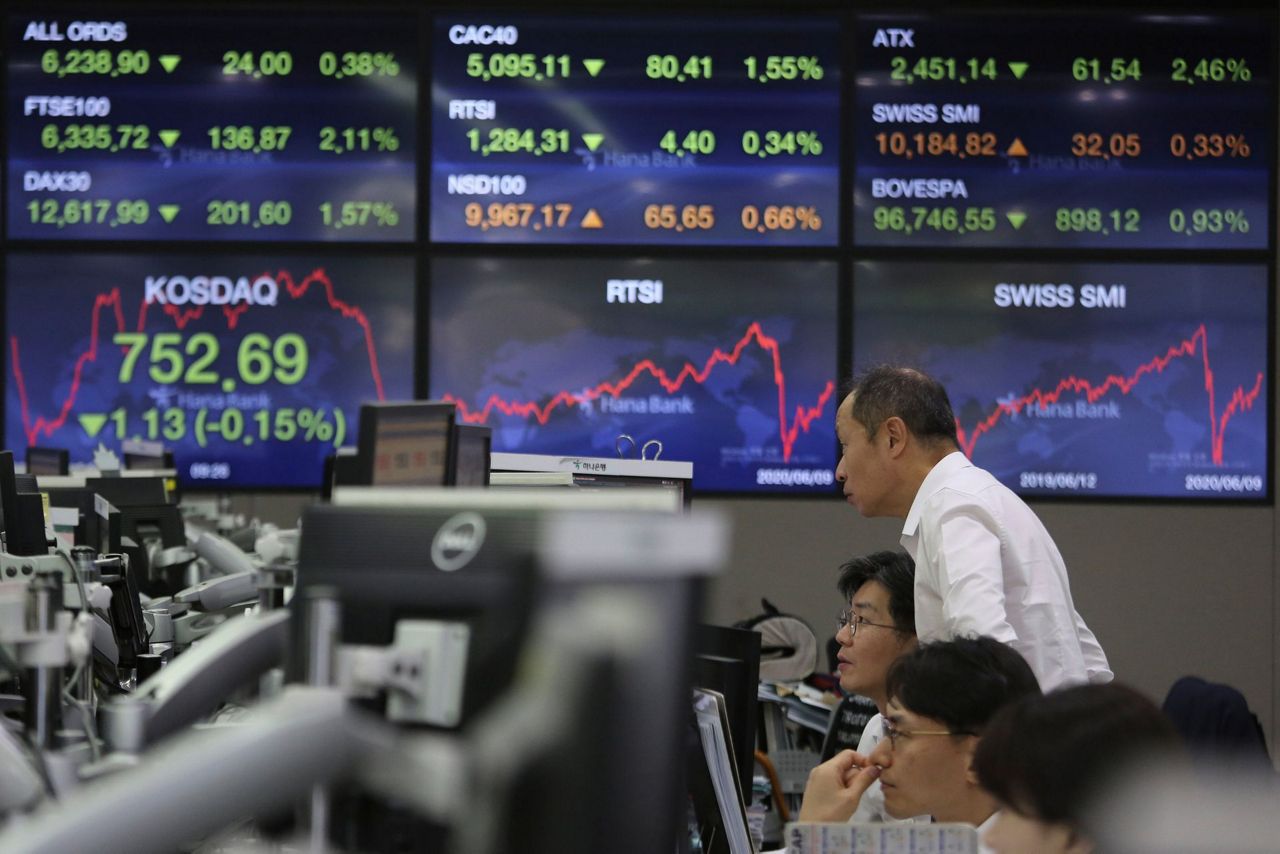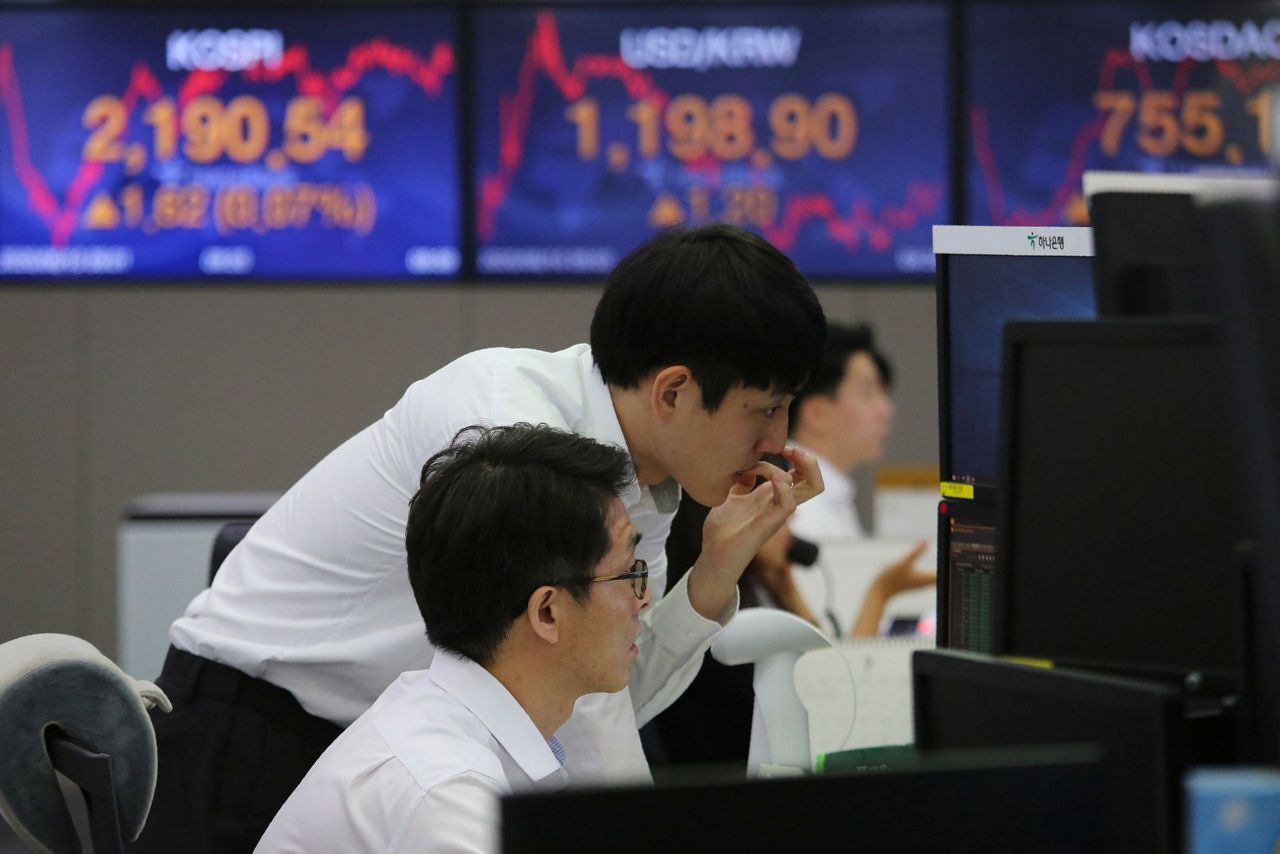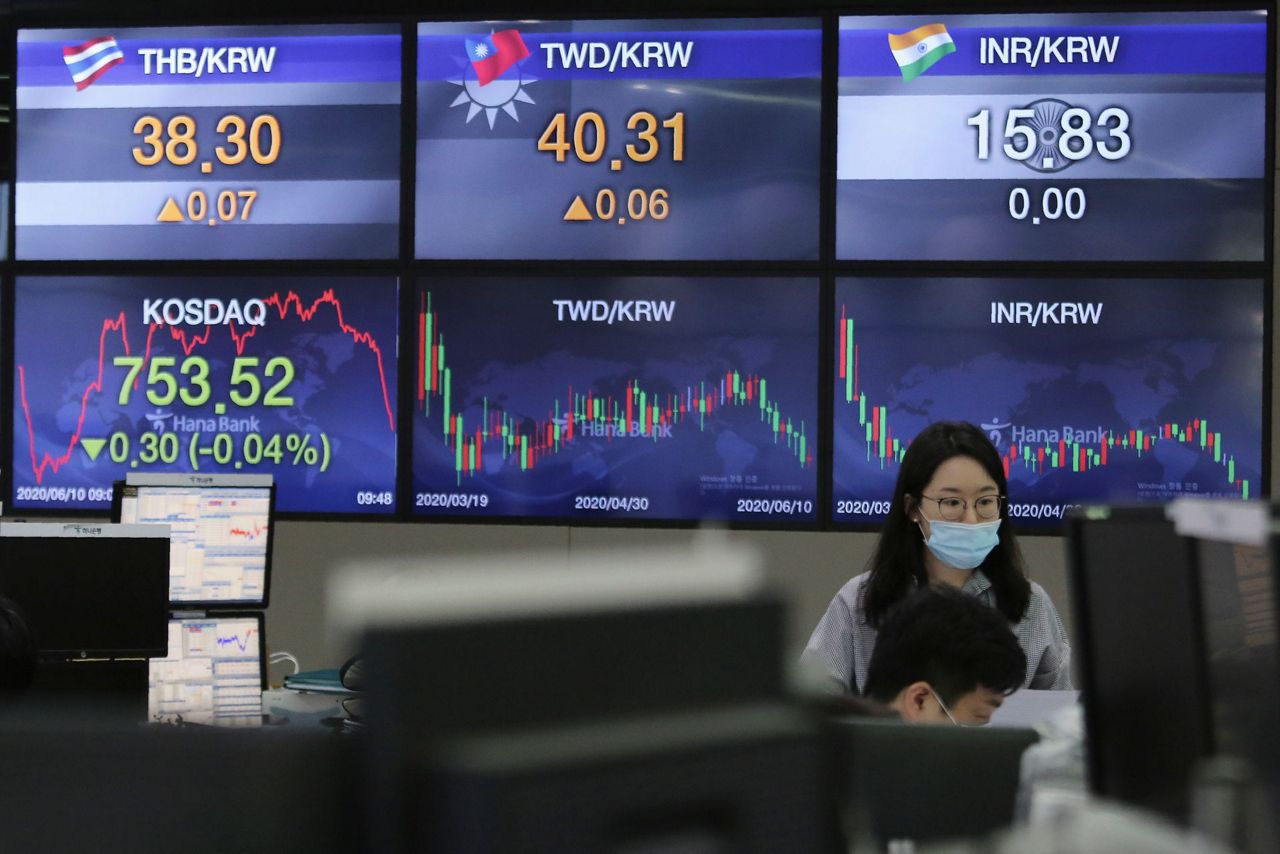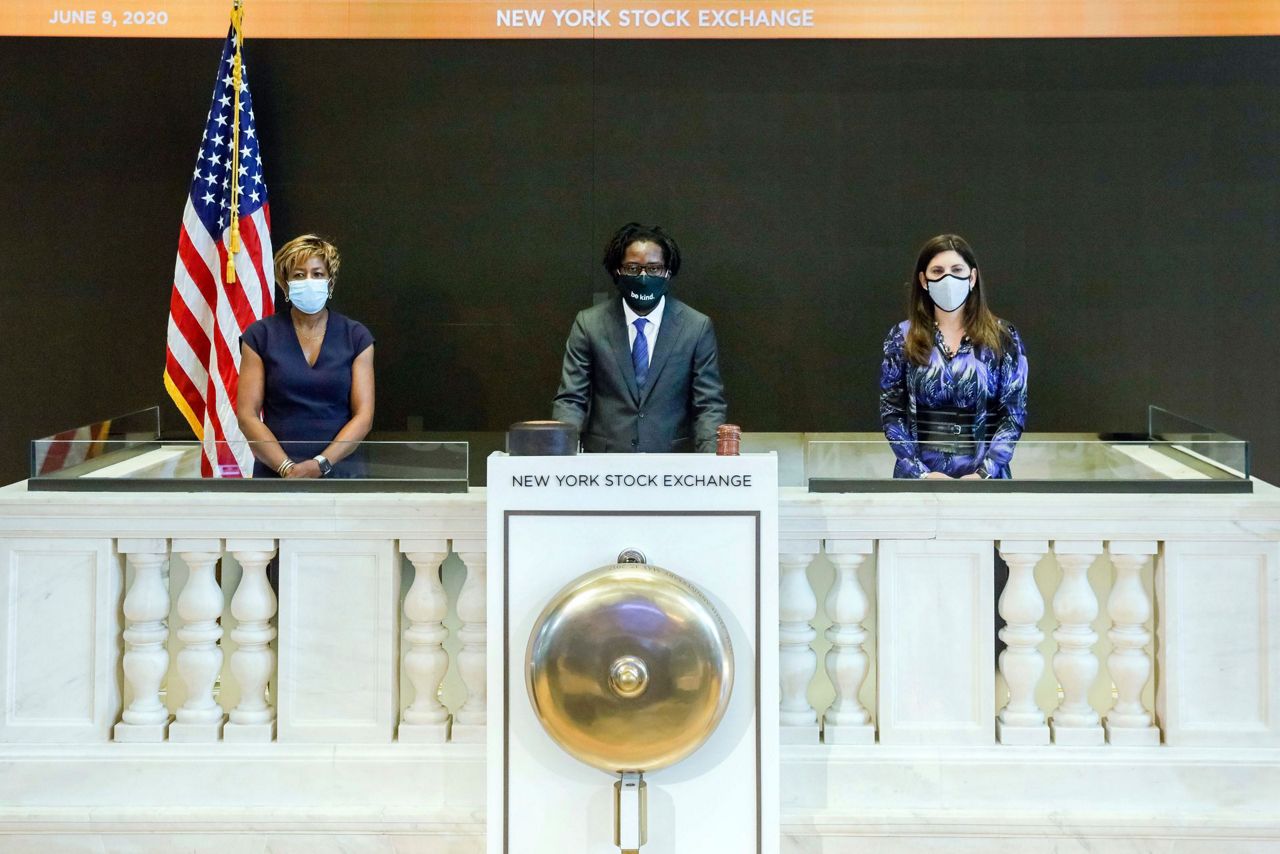Stocks ended a bumpy day mostly lower Wednesday despite assurances from the Federal Reserve that it would keep interest rates low through 2022 and would continue buying bonds to help markets function smoothly. The S&P 500 fell 0.5%. Most sectors finished lower, but gains from several big technology companies helped push the Nasdaq above 10,000 for the first time. Bond yields fell, a sign that investors remained cautious. Markets got off to a shaky start after the Organization for Economic Cooperation and Development said the coronavirus crisis has triggered the worst global recession in nearly a century.
THIS IS A BREAKING NEWS UPDATE. AP’s earlier story is below:
U.S. stock indexes were mostly lower Wednesday afternoon in choppy trading after the Federal Reserve said it expects to keep interest rates low through 2022 and keep up its bond purchases.
The S&P 500 was down 0.5% after initially rising to 0.4% following the release of the central bank's latest policy statement. A surge in technology sector stocks helped push the Nasdaq above 10,000 for the first time, placing it on track for its third record high close in a row.
Gains in technology and health care stocks offset losses in financial, industrial and energy companies. Bond yields were broadly lower, reflecting caution among investors.
The Fed has cut its benchmark short-term rate to near zero as part of a historic effort to gird the stock market and U.S. economy from the coronavirus pandemic's economic ravages. Keeping its rate ultra-low for more than two more years could make it easier for consumers and businesses to borrow and spend enough to sustain an economy depressed by business shutdowns and high unemployment.
The move to leave its key interest rate unchanged wasn’t a surprise to investors, but the fact that nearly all of the members of the central bank’s Federal Open Market Committee foresee no rate hike through 2022 was noteworthy, said Brian Nick, chief investment strategist at Nuveen.
“What you have on the FOMC is unanimity that rates ought to stay low and that their communication should continue to emphasize that they’re not going to raise interest rates, absent a material improvement in the economy,” he said.
The combination of low interest rates and low inflation has been a key driver for gains in big technology companies that can grow almost regardless of the economy.
“That’s been the magic formula for growth stocks,” Nick said.
The Dow Jones Industrial Average was down 120 points, or 0.5%, to 27,141. The Nasdaq composite was up 0.9%. The Russell 2000 index of small company stocks was down 1.4%.
Two of the nation's biggest mall owners fell sharply after Simon Property Group backed out of its $3.6 billion takeover of rival Taubman Centers. The buyout deal was signed in February, just before the pandemic began to spread in the U.S. Simon Property slid 3.1%, while Taubman plunged 19.5%.
Shares in electric car and solar panel maker Tesla traded above $1,000 for the first time. The stock closed Monday at a record $949.92. Tesla shares have more than doubled in value so far this year.
Airlines were among the biggest decliners after Delta Air Lines warned in a regulatory filing that it expects its revenue in the second quarter to be down 90% from a year earlier. Delta fell 7.7%, American Airlines dropped 7.8% and Alaska Air Group lost 10.3%.
Wall Street has been generally rising since late March, at first on relief following emergency rescues by the Fed and Congress. More recently, investors have begun piling into companies that would benefit most from a reopening economy that’s growing again. The S&P 500, a benchmark for many index funds, is now within 6% of reclaiming the all-time high it reached in February.
“What matters to the market is making sure the coronavirus doesn’t come back in any material way and making sure the Fed is continuing to support economic activity,” said Mike Zigmont, head of trading and research at Harvest Volatility Management.
Bond yields fell. The yield on the 10-year Treasury yield slid to 0.75% from 0.82% late Tuesday. It tends to move with investors’ expectations of the economy and inflation, though it’s still well above the 0.64% level where it started last week.
Oil prices rose. Benchmark U.S. crude oil for July delivery rose 1.7% to settle at $39.60 a barrel. Brent crude oil for August delivery rose 1.3% to $41.73 a barrel.
Skeptics have been saying for weeks that Wall Street’s huge rally, which reached 44.5% between late March and Monday, may have been overdone, given uncertainties over how quickly economies can recover from the pandemic when the numbers of infections and fatalities are still rising in many countries.
Apart from unabated numbers of infections in some U.S. states, experts worry surging numbers of coronavirus cases in developing regions with shaky health systems could undermine efforts to halt the pandemic.
India, Pakistan, Brazil, Mexico and South Africa are among the countries easing lockdown restrictions before their outbreaks have peaked and without detailed surveillance and testing systems in place.
Even so, stock market investors have come to expect that the U.S. economy will be able to manage a potential second wave of the virus. That, plus a belief that the Fed has essentially kept the nation out of a second Great Depression, has helped support the market's rebound from its March lows, Zigmont said.
“With those two different but related disasters eliminated, it makes sense that we rallied a lot,” he said.
European indexes were broadly lower. Germany’s DAX lost 0.7%. France’s CAC 40 slid 0.8% and the FTSE 100 in London was off 0.1%. Asian markets ended mixed.
The pullback came as the Organization for Economic Cooperation and Development said the coronavirus crisis has triggered the worst global recession in nearly a century and projected that the global economy will shrink by 6% this year in a best-case scenario, with only a modest pick-up next year.
The estimate, which is based on an analysis of the latest global economic data, suggests an even sharper decline of 7.6% if there is a second wave of coronavirus contagions this year.
Copyright 2020 The Associated Press. All rights reserved. This material may not be published, broadcast, rewritten or redistributed without permission.



